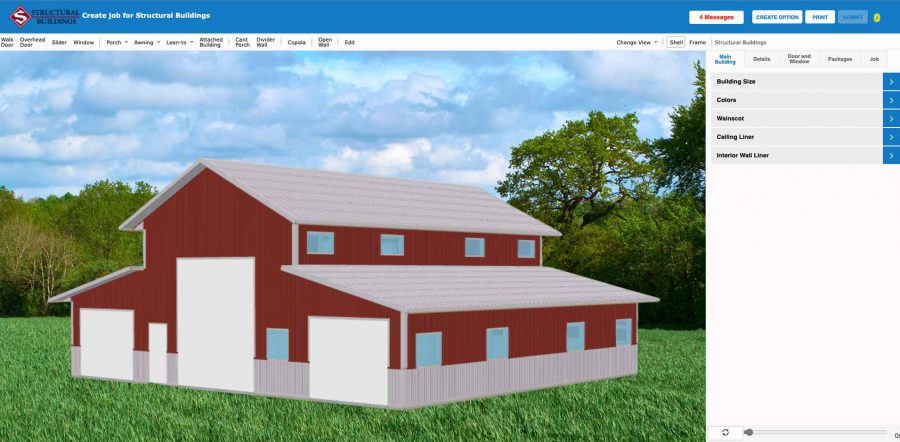As winter approaches, it’s essential to think about the impact of snow on our buildings. For those in areas that see heavy snowfall, this consideration is particularly important. One of the primary components affected by snow accumulation is the truss, the triangular framework that supports a building’s roof. In this blog post, we’ll explore why understanding and accommodating snow loads on trusses is critical for structural integrity and safety.
What is Snow Load?
Snow load is the force exerted by accumulated snow on a structure, particularly the roof. The weight and type of snow (wet or dry, fresh or packed) affect the load it applies to the building’s roof. Engineers design trusses with specific snow load capacities, taking into account the region’s climate and historical snowfall data.
Why Snow Load Matters for Trusses
1. Structural Integrity and Safety
– Trusses are carefully engineered to bear the weight of roofing materials, live loads (people or equipment on the roof), and environmental loads like snow. When a truss is overloaded, it can weaken and potentially fail. Roof collapse due to snow load isn’t just a risk to the building itself but poses serious dangers to occupants and equipment inside.
2. Avoiding Costly Damage
– Failure to account for proper snow load can lead to structural damage that often requires extensive repairs. Not only can this include roof replacement, but it may also entail repairing walls, insulation, and even foundational issues that arise from truss movement. Preventing this damage by ensuring that trusses meet appropriate snow load requirements is more cost-effective than repairing or rebuilding.
3. Maintaining Insurance and Compliance Standards
– Many insurance policies have specific clauses regarding the maintenance of roofs and trusses, especially in snow-prone areas. Structural failure due to improper snow load consideration may void insurance coverage. Additionally, local building codes mandate minimum snow load capacities for safety, and non-compliance can lead to fines, forced repairs, or even building closures.
4. Protecting Against Accumulated Stress Over Time
– Snow load doesn’t only cause immediate issues; it also contributes to wear and tear over time. Repeated cycles of snow accumulation, melting, and re-accumulation can weaken trusses gradually. These stresses can result in the need for earlier-than-expected repairs or replacements, costing building owners both time and money.
How Are Snow Loads Determined?
Snow load design involves considering several factors:
Geographic Location: Areas with historically heavy snowfall have higher load requirements.
Roof Pitch and Design: Steep roofs shed snow more easily than flat or shallow-pitched roofs, so they may have different load standards.
Exposure Factor: Buildings in open fields or windy areas may experience different snow accumulations compared to those in sheltered areas.
Steps for Ensuring Proper Snow Load Support
1. Work with Experienced Engineers
– Engineers can calculate the precise snow load for your area and building type. If you’re constructing a new building, be sure your trusses meet these standards from the outset.
2. Routine Inspections and Maintenance
– Regular inspection of trusses, especially in older buildings, helps detect signs of stress or damage early on. Any cracking, bending, or signs of sagging should be promptly addressed to prevent worsening issues.
3. Snow Removal Planning
– In areas with extreme snowfall, routine snow removal may be necessary. However, removing snow improperly can cause even more damage to the roof and trusses, so it’s important to follow safe practices or consult professionals.
4. Invest in Reinforcement or Retrofitting if Necessary
– If you have an older building or suspect that your trusses may not support modern snow loads, consider retrofitting them. Reinforcing trusses is often a straightforward process and can significantly improve your structure’s resilience.
Trusses are an essential element in any building, and proper snow load accommodation ensures that they perform their job year after year. Preparing your building for winter by focusing on snow load isn’t just a matter of meeting code; it’s about protecting the people, assets, and investments inside. With a combination of engineering, planning, and maintenance, buildings can withstand the demands of winter and continue standing strong, season after season.


